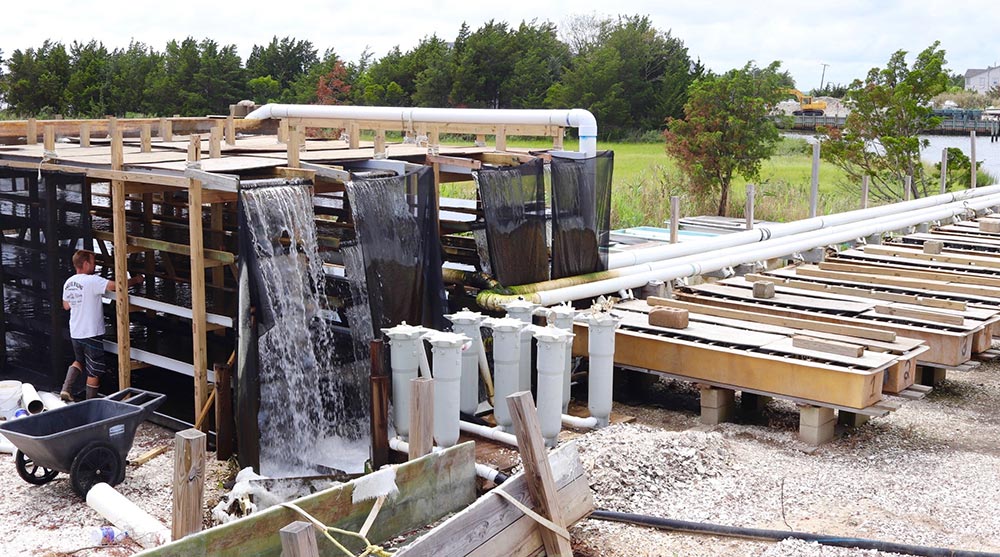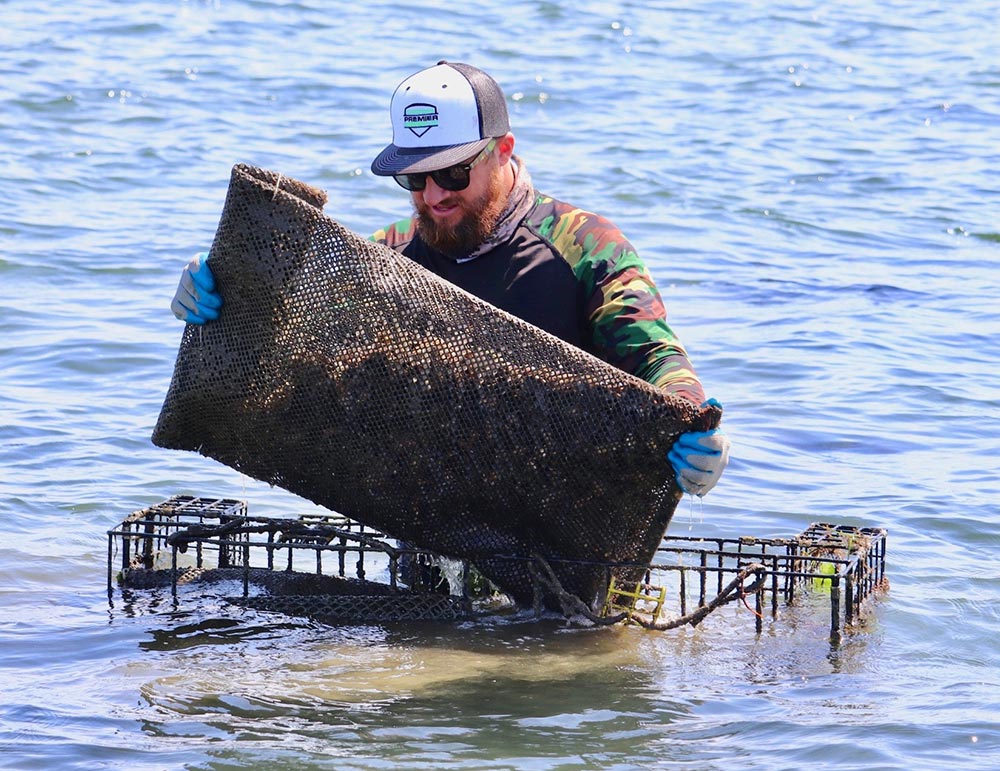Boots in the Water
(September, 2020) Ocean County Soil Conservation District now has “boots in the water” working with local shellfish farmers to gain a better understanding of their specific natural resource concerns. OCSCD Erosion Control Specialist, Kristin Adams, recently visited two different aquaculture operations to learn more about oyster farming from industry professionals.
 Raceway and Upwellers at Parson’s Farm
Raceway and Upwellers at Parson’s FarmDale Parsons of Parsons Mariculture in Tuckerton offered a tour of his nursery where he raises oyster spat and hard clam seed in raceways and upwellers. This system provides a continuous flow of oxygenated bay water rich with phytoplankton for the growing shellfish to eat.
Oyster seed that has “set” onto recycled surf clam, whelk and oyster shell is used to establish and enhance oyster reefs in the bay, some for commercial harvest and some for restoration and research. Clam seed is broadcast into the water on Dale’s leases, where it will settle onto the sandy bottom and mature before harvesting.
 Matt Gregg of Forty North Rack and Back System
Matt Gregg of Forty North Rack and Back System Here, they also continue to provide an important ecosystem service – to clean the water! This method of growing oysters is not only possible in sandy bottoms, but also in areas that are otherwise too muddy for cultivation directly on the intertidal grounds.
